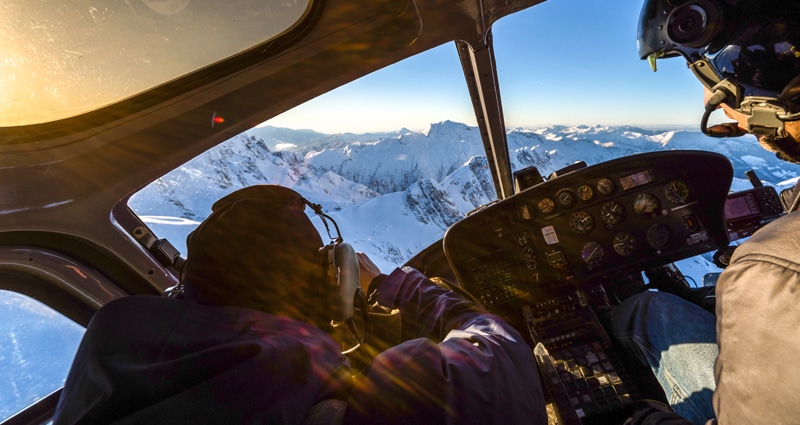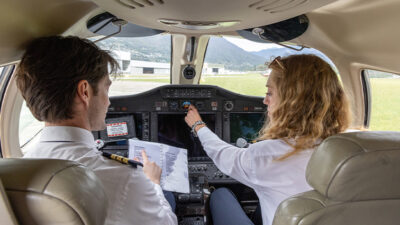Aviation Mastery or Minimums… What’s Your Safety Standard?

How many times has someone in the aviation profession asked you (or have you asked yourself), “Is this good enough?”
What does “good enough” really mean, anyway? In our opinion, “good enough” constitutes an attitude of mediocrity. And, “mediocrity” does not constitute safe or professional operations.
The real question should be: “Is good enough ever really good enough in any business or private aviation pursuit? Does ‘good enough’ ever get you to the highest level of safety?”
So many times, we use the descriptive phrases “world-class,” “best-in-class” and “excellence.” But do we really mean it or is it simply “ear candy” because it sounds good?
In the realm of professional aviation, each of us carries a mantle of tremendous responsibility for the other souls with whom we share the airspace, our families and colleagues, our companies and employers and, of course, ourselves. The consequences of a serious misstep in our profession can have a finality that renders the statement, “I will do better next time” meaningless.
Given those stakes, to what levels of safety, professionalism and performance should we aspire? Perfection? No. By definition, perfection simply is not reachable. But mastery is!
Defining Aviation “Mastery” as It Relates to Safety and Professionalism
Mastery. It can be an arduous and demanding standard, yet it’s achievable. Can “mastery” get you to “safe”? Yes, without a doubt!
This attitude can be applied to every role in aviation—as maintenance technicians, flight crew members, schedulers and dispatchers, business office specialists and leaders.
Mastery vs. Minimums
The unfortunate reality is that aviation’s operational standards historically have been, and to this day still are, put forth as minimum standards. This terminology is in standard usage for everything—from FBO leases with the local airport authority to pilot type ratings for today’s most sophisticated business jets.
The acceptance of “minimum standards” has helped perpetuate a culture of minimum performance that seeps into virtually every aspect of aviation. And when you consider the deadly consequences of a misstep, don’t you find it ironic that “minimum” and “standards” are used together in the context of “safety” and “performance”?
Here’s a true story: Not too long ago, we were at one of our industry’s leading Part 142 training facilities. There were about two dozen full-motion simulators humming around the clock.
The classrooms were beautifully outfitted with the latest interactive learning tools. And there was a top-notch resource library staffed by a pair of professional librarians, eager to help with any conceivable research request.
Over lunch, the conversation between one of our classmates and the instructor went something like this:
“I’m supposed to be here for five days, but do you think I can skip the LOFT and be out of here in four days? And, if we could double up a day, can we check all of the boxes (the FAR 61.58 PIC check) in three days? What’s the minimum that I really have to do?”
For those of you who have completed even a few cycles of recurrent training, we’re sure that conversation sounds pretty familiar.
But when the instructor started probing to gauge the student’s true level of understanding (systems, performance, etc.), the student got resistant and asked, “What’s the minimum that I need to know?” Does that sound like a quest for excellence? What’s the attitude toward safety and professionalism in that question?
Mastering Mastery
If we truly think of ourselves as aviation professionals, what level of performance comes along with earning that title? We argue that it is mastery and mastery alone. Mastery is the precursor to safe operations.
That means having a profound understanding of all of the relevant subjects in your area of focus. It also means understanding all of the “why’s”—not just the “how’s.”
And, finally, it means being able to mentor, teach and communicate your invaluable understanding and experiences to those individuals who are in the developmental years of their careers. That’s how we will develop a true “Just Safety Culture” among the aviation professionals following in our footsteps.
We believe that everyone in an aviation organization should be a leader. And it is up to each of us to set the standards of aviation safety and mastery; first for ourselves, and then to influence the adoption of those standards throughout each of the functional areas in our respective organizations.
It’s not easy. Without a doubt, the performance bar to reach these levels of safety and mastery will be ever higher. As we learn more, and perform at higher levels, the horizon of possibility and performance will always stretch out in front of us—always just a little out of reach.
But as we learn more, we understand more. And as we understand more, we become more valuable to our aviation organizations. When that happens on a consistent basis, business aviation will create more quantifiable value for our host organizations.
After all, Mastery is a cornerstone of aviation professionalism which will yield consistently safe operations and outcomes.
Now, back to that opening question: “Is just ‘good enough’ ever really ‘good enough’?”
Well, one thing is for certain: “good enough” certainly isn’t mastery! And, if it isn’t mastery that we’re aiming for, can we rightfully refer to ourselves as “aviation professionals”?

Gray Stone Advisors combines their experience both in leading businesses as well as business aviation operations to provide flight department leaders with proven strategies for excellence.
https://www.graystoneadvisors.com/
© 2024 Gray Stone Advisors. All Rights Reserved.
Next ArticleRelated Posts

Safety in Numbers: Trends in Aviation Accidents and Incidents
Every accident is preventable; the problem is that we don’t know how to prevent it until after the accident happens. However, what we can do as an industry is honor the anguish of each event by sharing the information, the mistakes and the outcomes to improve safety for everyone.

The Flip Side of Psychological Safety
From a human factors perspective, we might be evolving towards a partial power situation. In the evolving landscape of workplace dynamics in pursuit of improved safety, the concept of psychological safety has gained significant traction. It’s the bedrock of an organizational culture that fosters open communication, innovation, and growth.

